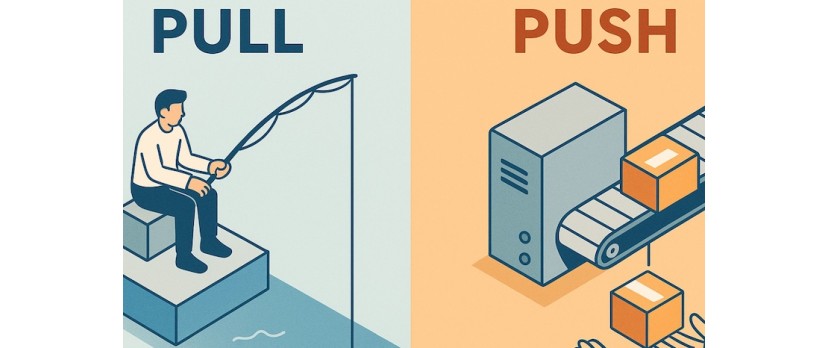Most e-commerce founders think about growth in terms of channels that pull customers in. You run ads. You rank on Google. You get lucky with a TikTok video. All of these feel natural because they’re passive. You set them up, and if the algorithm likes you, the customers come.
The Limitations of Inbound Growth Channels
The problem is that these channels are fragile. Ads get more expensive every year. Social feeds change on a whim. Google can wipe you out with an update. If your business depends entirely on inbound, you’re like a tenant renting space in someone else’s building. They control the rent.
The Case for Outbound in Ecom
Cold email is different. It’s push. It’s one of the few ways to create demand instead of waiting for it. For e-commerce, that doesn’t always mean sending emails directly to end customers (though it can). More often, it means reaching out to wholesale buyers, retail partners, affiliates, influencers, or suppliers. It means initiating conversations instead of waiting for them.
The skill is not just writing a clever email. It’s building a repeatable machine that can put your company in front of the right people every week, no matter what Google or Meta decide. If you can do that, you have a growth lever most of your competitors don’t.
Cold Email As A Competitive Advantage
The best companies are rarely limited by distribution. They can turn it on when they need it. That’s what outbound gives you: the ability to make things happen now. If you want to test a new product line, you don’t have to wait six months to see if ads or SEO will work. You can go directly to 50 potential partners this week.
And because most e-commerce entrepreneurs don’t think outbound applies to them, the lane is empty. Everyone is bidding against each other on Instagram ads, while almost no one is reaching out directly to potential distributors or partners. Which means if you do, you’ll be competing against silence.
Build a Resilient Growth Engine
Outbound also changes how resilient you are. An e-commerce company that can sell wholesale, cut exclusive deals, and recruit affiliates on demand is far less fragile than one whose entire fate rests on ad costs. They can survive downturns, algorithm shifts, and copycat competitors. They don’t just grow faster; they last longer.
This is the pattern you see in great companies. They’re not only good at making something people want. They’re also good at getting it in front of people through any channel available. If you can master cold outbound in e-commerce, you won’t just have another marketing tactic. You’ll have an unfair advantage.
How to Master Cold Email
The first thing to learn about email isn’t scale, it’s writing. The mistake most founders make is to automate too early. They treat outbound as a numbers game. But if the underlying message is bad, sending more of it just means burning more opportunities.
So start manually. Write the emails yourself. Have real conversations with potential customers, partners, and suppliers. Notice what gets a reply. Notice what falls flat. This is where you learn the craft: clarity, brevity, relevance. Once you’ve written enough of these by hand, you’ll know what works.
And learn the cold email outreach best practices.
Only then should you bring in automation or AI. At that point, scale makes sense, because you’re multiplying something that’s already proven to work. Cold outbound, done well, looks less like spam and more like an early version of sales itself talking directly to people who might care, and learning from every response.


Login and write down your comment.
Login my OpenCart Account